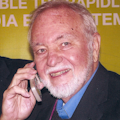60-GHz CMOS Transmitter Stimulates Millimeter-Wave Developments
How would you develop a wireless product for the 60-GHz band—yes, 60 GHz? That's millimeter-wave territory. Services exist up there now, but building 60-GHz mm-wave gear isn't an everyday design challenge. Yet as we run out of spectrum space in the lower bands, and we're just about there, more and more designs will push into the outer limits of radio. Toshiba may have a solution.
Unlicensed products may be built and sold in the 57- to 64-GHz band in the U.S. Transmitters up to 10 W may be used, and that's a challenge in itself. The WirelessHD consortium of consumer electronics companies plans to exploit that range for home-entertainment networking. New designs are a good fit for that range, especially if you're looking for a maximum data rate (greater than 1 Gbit/s) on a wireless link and you can live with short ranges of a few meters.
With most wireless designs today, you can simply go and find a technology that fits your application—like Wi-Fi, Bluetooth, and ZigBee. Then, you can seek out the appropriate chip sets or modules, and voila—a nearly instant wireless product.
Made from gallium arsenide (GaAs), current 60-GHz circuits work well but are very expensive. These chips also require separate integration with an antenna and a synthesizer, not mentioning the additional discretes, wire bonding, and ceramic substrates. Today, advances in standard CMOS processing make it possible to create 60-GHz chips.
At June's VLSI Circuits Symposia in Kyoto, Japan, Toshiba announced a single-chip CMOS 60-GHz receiver. It integrates an antenna, low-noise amplifier (LNA), mixer with preamplifier, and a phase-locked loop (PLL) synthesizer on a 1.1- by 2.4-mm die without pad area (see the figure). The process technology is 90-nm CMOS.
Fully differential circuitry improves signal quality as it achieves noise-resistant features suited to mm-wave IC applications. Optimizing the element structure and wiring minimizes internal noise and contributes to stable operation. Because it's CMOS, it's far less expensive than comparable GaAs circuits. Additionally, it suits further integration with other functions.
While the chip isn't currently available, it will be in the future. Toshiba is working to improve the integration and the receiver performance. A CMOS transmitter is also being developed. Stay tuned and get ready for mmwave fun and games.
Toshiba Corp.
www.toshiba.com
About the Author

Louis E. Frenzel
Click here to find more of Lou's articles on Electronic Design.